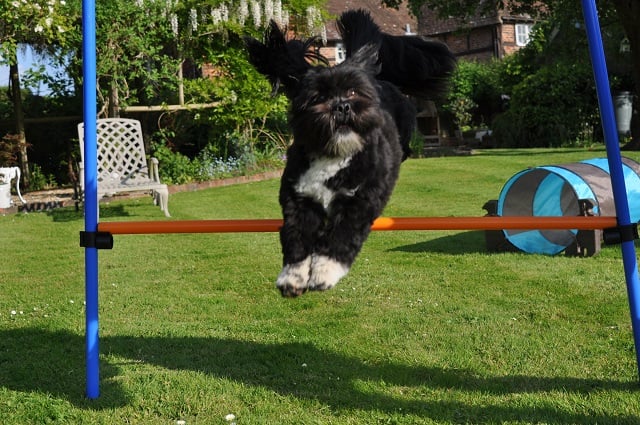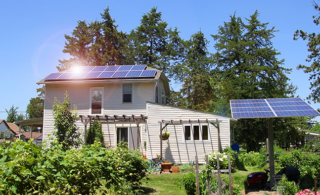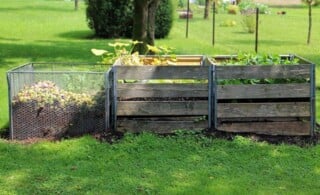 Agility training is more than a great workout for your furry, four-legged best friend. It’s also a great way to keep your dog calm and help curb behavior issues. The best part is that you don’t need expensive classes. You can set up a unique course, plan a routine and train your pet right in the comfort of your backyard. Plus, nothing can beat the quality time spent with your dog.
Agility training is more than a great workout for your furry, four-legged best friend. It’s also a great way to keep your dog calm and help curb behavior issues. The best part is that you don’t need expensive classes. You can set up a unique course, plan a routine and train your pet right in the comfort of your backyard. Plus, nothing can beat the quality time spent with your dog.
If you’re thinking of getting your pet started in the sport, there are a few things you should know before you jump in.
Safety First
A safe environment is an absolute must to prevent injury. Since you and your pet will be spending even more time outdoors, you should make sure to pet-proof your yard before you begin setting up your course.
- Your pup will be off leash while you’re training, and sometimes, even the best-trained pups can’t resist a rabbit on the run. If you already have a fence surrounding your property, repair any damage, including broken latches or openings large enough for your dog to crawl through. If you don’t already have a fence, consider hiring a fencing pro to install one or to construct a dog run with a pro who knows how to get the correct measurements for you and your dog to practice.
- Check for poisonous plants, both growing wild and in your own garden. Be sure to install a barrier around areas you want to protect your pets from (and vice versa!).
The Right Stuff
Once you’ve made sure your yard is ready, you can start setting up your agility course. You don’t have to invest in a lot of fancy equipment, since you can create most of the obstacles with things you already have lying around or low-cost supplies from your local big box store.
- Weave poles – Stick 10 to 15 lengths of PVC pipe directly into the ground in a straight line, leaving enough space between poles for your dog to safely navigate.
- Dog walk – Like a balance beam, this obstacle can be created by connecting three pieces of plywood with hinges. Then, simply lay them over two cinder blocks to create a plank walk. Just be sure the wood is wide enough for your pet to safely navigate. You should also apply a non-stick coating to prevent slipping.
- Jumps – A main concern with jumps should always be safety, so don’t just stack items on top of one another. You can build your own dog agility jumps with these instructions and a few supplies from your local hardware store. The pieces of pipe will fall away when hit, reducing the chances of your dog getting injured if it comes up short.
- Tunnels – It’s easier to buy a tunnel than make one, but you don’t have to spend a lot. A plastic, collapsible tunnel from the children’s toy section will work just fine.
- Hoop jumps – A one-dollar hula hoop from the bargain store will work well here, as if the hole is big enough for your dog to pass through easily. Be sure to hold the hoop, instead of hanging it. Then, you can drop it immediately if your dog gets caught.
Have Fun
The best way to ensure your dog’s training is a success— is to remember that it’s supposed to be fun. All dogs (and owners) are different; and picking up new skills at a different pace. Manage your expectations, deliver ample praise and keep sessions short so your dog doesn’t lose interest.
- Build focus. Teach your dog to make eye contact with you on command to help tune out external distractions. A quiet location works best in the beginning.
- Incorporate tricks. Teaching your dog tricks can help with agility training. If they learn how to touch their nose to a target or move backwards, their coordination and confidence will increase.
- Work on flexibility. Tight turns, twirls, figure eights and bows are a good way to stretch your dog’s muscles and build flexibility needed for agility.
- Practice handling. How you handle your pet will play a huge role in how successfully they navigate the obstacle course. Spend time teaching your dog to walk, jog and run alongside you. Treats for following instructions work well here!
- Increase awareness and confidence. Activities like perching on a small surface and climbing in and out of boxes help your dog understand where their entire body is, instead of simply focusing on their front feet. Incorporating moving objects by placing them on a skateboard or in a wagon can help build confidence and conquer fear.
If you are looking for a fun, productive way to spend more time with your dog – agility training could be the perfect activity. All it takes is a safe space, some homemade obstacles and a commitment to your pup’s health and happiness. Consider talking to a pro landscaper near you to get started.
 Organic Home Gardening Tips to Feed Your Whole Family
Organic Home Gardening Tips to Feed Your Whole Family  Composting and Landscaping at Home
Composting and Landscaping at Home  Home Gardening Tips: From Composting To Herb Gardens
Home Gardening Tips: From Composting To Herb Gardens  Gardening Hacks to Protect and Nourish Your Plants
Gardening Hacks to Protect and Nourish Your Plants  Backyard Tree Identification Guide
Backyard Tree Identification Guide 

Are You Familiar With This Topic? Share Your Experience.